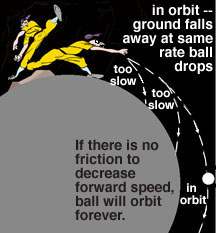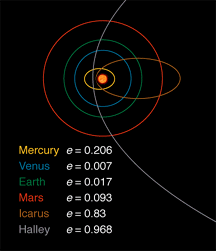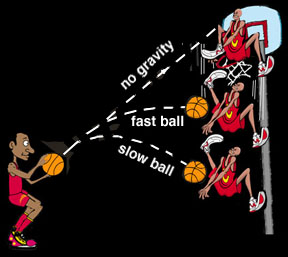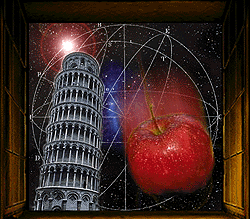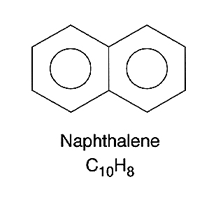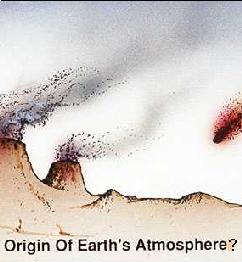Click on image for full size
Windows to the Universe original artwork.
The Heart of Satellite Orbits
Starting at the same altitude above the surface of a small moon, balls are thrown at different speeds. Regardless of the horizontal speed of the balls, they all fall at the same rate and hit the surface at the same time. The faster balls go further, in the same elapsed time as the slower balls, before hitting the ground. Finally, a ball travels so fast and thus so far before falling, that the ground doesn't appear flat but curves away beneath the ball. At just the correct speed, the ground curves away at the same rate that the ball drops. The ball has achieved orbit.
If the baseball player were to climb a high mountain and repeat the same exercise, the moon would appear smaller with the ground curving away more sharply. The speed that the ball needs to achieve orbit gets slower and slower as altitude increases and the curvature gets more pronounced. The combination of forward speed and falling determine the curvature of the ball's path. Matching this curvature to the curvature of the moon's surface at each altitude is at the heart of satellite orbits. The satellite drops forever towards the moon's surface but since the moon's surface curves away at the same rate, the satellite remains suspended forever at the same height above the surface. It is in orbit.
Why do satellites sometimes fall out of the sky? Frictional forces like the drag of the atmosphere on the satellite can cause the forward speed of the satellite to decrease. As a result, the curvature of the orbit changes, decreasing so that it no longer matches the curvature of the moon's surface at this altitude. It is now like one of the "too slow" balls in the cartoon. The satellite begins to drop. As it drops it increases in speed in the vertical direction due to gravity, but never again moves fast enough in the horizontal direction to maintain its orbit. The satellite will slowly descend to the surface unless it is reboosted to speeds sufficient to achieve orbit at its new altitude.


